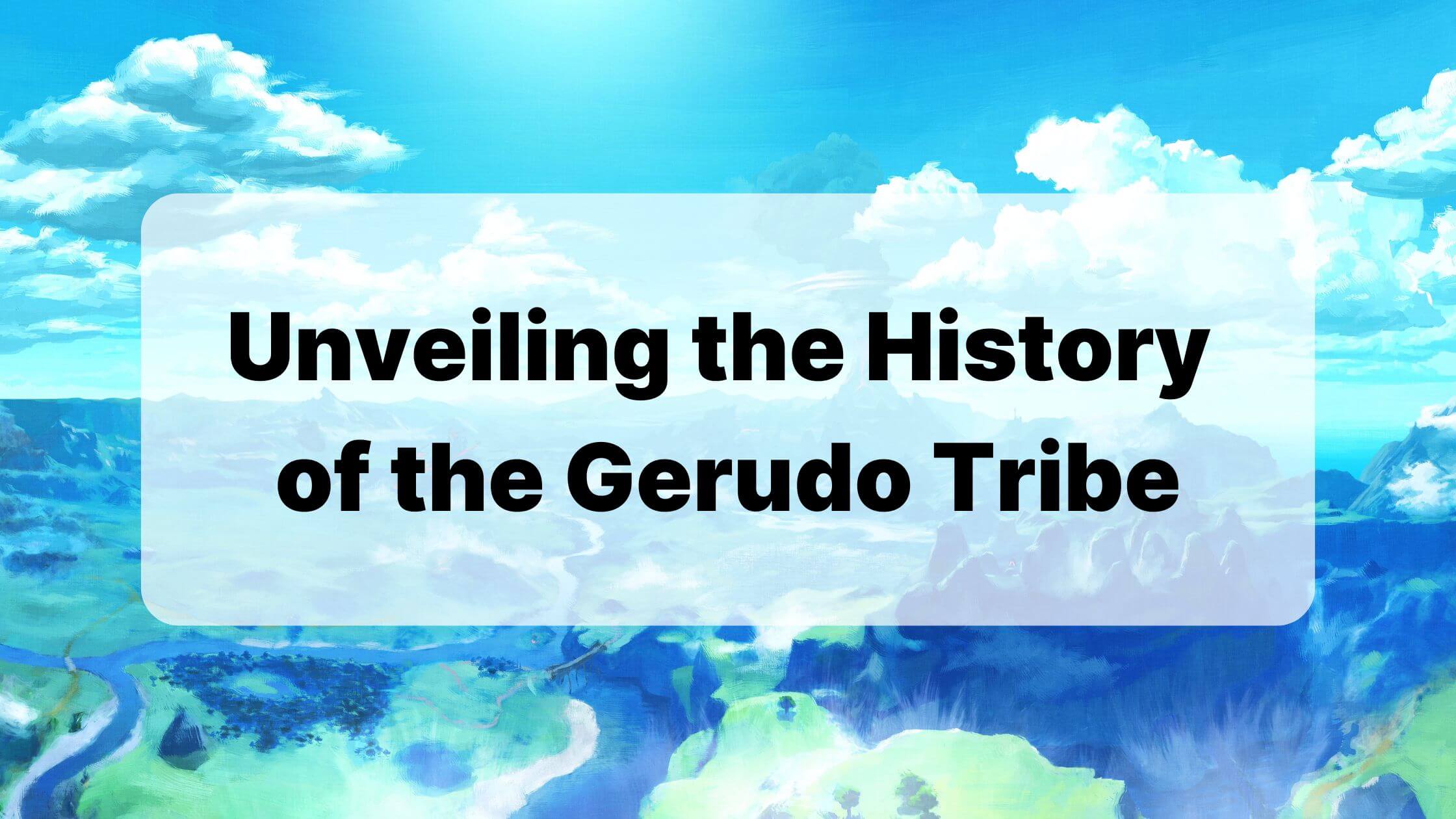The Gerudo tribe, one of the most fascinating and enigmatic races in Nintendo’s iconic The Legend of Zelda series, have intrigued fans for decades. Known for their distinct culture, desert-dwelling lifestyle, and the unique lore surrounding their existence, the Gerudo are a central piece of the Hyrulean tapestry. This article delves into their origins, exploring their lore, cultural significance, and their connection to one of the series’ most infamous characters, Ganondorf.
Who Are the Gerudo?
The Gerudo are a tribe of warriors known for their striking appearance: tanned skin, fiery red hair, and athletic builds. Residing in the arid Gerudo Desert, they are predominantly female, with a unique biological trait—a male is born into the tribe only once every 100 years. This rare male Gerudo is destined to be the king of the tribe, a tradition that underscores their matriarchal yet unique societal structure.
The Gerudo are renowned for their independence and resourcefulness. Isolated from the more temperate lands of Hyrule, their desert environment has shaped them into a hardy people, adept at surviving in harsh conditions. They are also known for their advanced architecture and skillful craftsmanship, which can be seen in the intricate designs of Gerudo Town and their weapons.
The Mythical Origins of the Gerudo
The Gerudo’s origins are steeped in mystery, with much of their history passed down through oral tradition and hinted at in the lore of The Legend of Zelda series. Some legends suggest that the Gerudo were created by the Goddess Din, one of the three deities responsible for shaping the world of Hyrule. As the goddess of power, Din’s influence is evident in the Gerudo’s physical and mental fortitude, as well as their unwavering determination.
The Gerudo’s connection to Din also ties them to the Triforce, the sacred artifact that governs the balance of power, wisdom, and courage in Hyrule. This connection becomes crucial when examining the rise of Ganondorf, the most infamous Gerudo in Hyrulean history.
Ganondorf: The King of the Gerudo
Ganondorf Dragmire, also known simply as Ganon, is the only male Gerudo introduced in the series and serves as the primary antagonist in several Legend of Zelda titles. His story is deeply intertwined with the fate of the Gerudo and the broader conflict surrounding the Triforce.
Born to the Gerudo during one of their rare male births, Ganondorf quickly ascended to power as their king. Unlike his predecessors, Ganondorf’s ambitions extended far beyond the Gerudo Desert. Obsessed with power, he sought to claim the Triforce for himself, believing it would grant him dominion over all of Hyrule.
Ganondorf’s cunning and charisma initially allowed him to form alliances with Hyrule’s royalty, but his betrayal and eventual transformation into the demon king Ganon cemented his role as a villain. Despite his dark path, Ganondorf’s motivations often stem from a desire to secure a better future for his people. His actions—while destructive and selfish—reflect the harsh realities of life in the Gerudo Desert and the marginalization his tribe has faced in Hyrulean society.
Cultural Symbolism and Representation
The Gerudo stand out in The Legend of Zelda for their rich cultural representation. Inspired by Middle Eastern and North African aesthetics, the Gerudo’s architecture, music, and clothing celebrate diversity in the fantasy world of Hyrule. Their portrayal has sparked conversations about representation in gaming, with many fans praising Nintendo’s efforts to create a multifaceted and memorable group of characters.
At the same time, the Gerudo’s lore raises important questions about the depiction of marginalized groups in fantasy settings. Ganondorf’s role as a villain, for instance, has been scrutinized for reinforcing stereotypes. However, recent games like Breath of the Wild have taken steps to humanize the Gerudo, showcasing their everyday lives, customs, and values.
The Gerudo in Modern Zelda Games
In Breath of the Wild, the Gerudo received a significant spotlight. Gerudo Town, the tribe’s bustling desert capital, serves as a hub of commerce and culture. Players are introduced to a wide array of Gerudo characters, each with their own stories and personalities, enriching the tribe’s lore.
The game also emphasizes the Gerudo’s strength and ingenuity. From the powerful warrior Urbosa, one of the Champions of Hyrule, to the imposing Yiga Clan—a group with ties to Gerudo history—the tribe’s influence is felt throughout the game.
In addition to Urbosa’s prominence, the Gerudo’s integration into Hyrulean politics and alliances is further explored in Tears of the Kingdom, the sequel to Breath of the Wild. This installment delves deeper into their interactions with other tribes and their pivotal role in the balance of Hyrule’s power structure. Their military prowess, intricate diplomacy, and cultural traditions remain key highlights.
The Tragedy and Triumph of the Gerudo Legacy
Despite their contributions and rich culture, the Gerudo’s legacy is often overshadowed by Ganondorf’s dark deeds. His actions have placed a stigma on the tribe, leading to strained relations with other groups in Hyrule. However, newer games in the series have worked to separate the Gerudo’s identity from that of their infamous king, emphasizing their individuality and the vibrant lives they lead outside of his shadow.
The Gerudo’s story is one of resilience. Despite being misunderstood and sometimes maligned, they continue to thrive as a proud and formidable tribe. Their ability to adapt and innovate in the face of adversity mirrors the experiences of real-world communities that endure under challenging circumstances.
Conclusion
The Gerudo people are more than just a side note in The Legend of Zelda; they are a vital part of its world-building and storytelling. From their mythical origins and unique traditions to their complex relationship with Ganondorf, the Gerudo enrich Hyrule with their depth and intrigue. Their story is a testament to the power of resilience, community, and identity in the face of adversity.
As the series continues to evolve, fans eagerly anticipate how Nintendo will further explore and celebrate the legacy of this remarkable tribe. The Gerudo are not just characters in a game—they are a reflection of the complex interplay of history, culture, and identity that makes The Legend of Zelda one of the most beloved franchises in gaming history.

